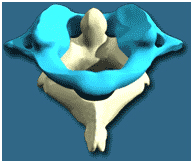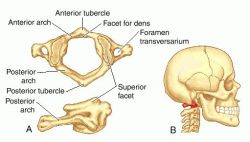

In the Food Access Research Atlas, low access to healthy food is defined as being far from a supermarket, supercenter, or large grocery store. The tract is in a metropolitan area and has a median family income less than or equal to 80 percent of the metropolitan area's median family income.

The tract’s median family income is less than or equal to 80 percent of the State-wide median family income or.The tract’s poverty rate is 20 percent or greater or.This program defines a low-income census tract as any tract where: The criteria for identifying a census tract as low income are from the Department of Treasury’s New Markets Tax Credit (NMTC) program. Users can also view other census-tract-level characteristics that provide context on food access in neighborhoods, such as whether the tract has a high percentage of households far from supermarkets and without vehicles, individuals with low income, or people residing in group quarters. For example, users can choose alternative distance markers to measure low access in a neighborhood, such as the number and share of people more than one-half mile to a supermarket or 1 mile to a supermarket. In the Food Access Research Atlas, several indicators are available to measure food access along these dimensions. Neighborhood-level indicators of resources, such as the average income of the neighborhood and the availability of public transportation.Individual-level resources that may affect accessibility, such as family income or vehicle availability and.Accessibility to sources of healthy food, as measured by distance to a store or by the number of stores in an area.Most measures and definitions consider at least some of the following indicators of access: There are many ways to measure food store access for individuals and for neighborhoods, and many ways to define which areas are low-income and low access-neighborhoods that lack healthy food sources. Limited access to supermarkets, supercenters, grocery stores, or other sources of healthy and affordable food may make it harder for some people to eat a healthy diet in this country. Comparisons of 20 low-income and low-access census-tract estimates.Definitions of indicators in mapping tool.The authors have declared no competing interest.This page provides the following information: Together, these results highlight the heterogeneity of cellular populations in the VTA and identify novel markers and disease-linked genes enriched in distinct neuronal subtypes. Finally, snRNA-seq enabled the de novo identification of thousands of marker genes for each transcriptionally distinct population, revealing cluster-specific enrichment of gene sets implicated in neuropsychiatric and neurodevelopmental disorders, as well as specific phenotypes associated with alcohol and tobacco use. Further subclustering revealed several VTA neuronal populations expressing markers for more than one neurotransmitter system, with one cluster exhibiting high expression levels of genes involved in the synthesis and transport of GABA, glutamate, and dopamine. We identified 16 transcriptionally distinct cell types within the VTA, including 7 neuronal populations. Here, we performed single nucleus RNA-sequencing (snRNA-seq) on 21,600 VTA cells from male and female Sprague-Dawley rats to generate a transcriptional atlas of the rat VTA. However, these studies have largely relied on low-throughput methods, and the molecular architecture of the VTA has not been comprehensively examined. Interestingly, molecular characterization has revealed that subsets of these neurons express genes involved in the transport, synthesis, and vesicular packaging of multiple neurotransmitters, providing evidence for co-release neurons. While decades of research on VTA function have focused on the role of dopaminergic neurons, recent evidence has identified critical roles for VTA GABAergic and glutamatergic neurons in reward processes as well. The ventral tegmental area (VTA) is a complex brain region that is essential for reward function but is also implicated in neuropsychiatric diseases including substance abuse.


 0 kommentar(er)
0 kommentar(er)
